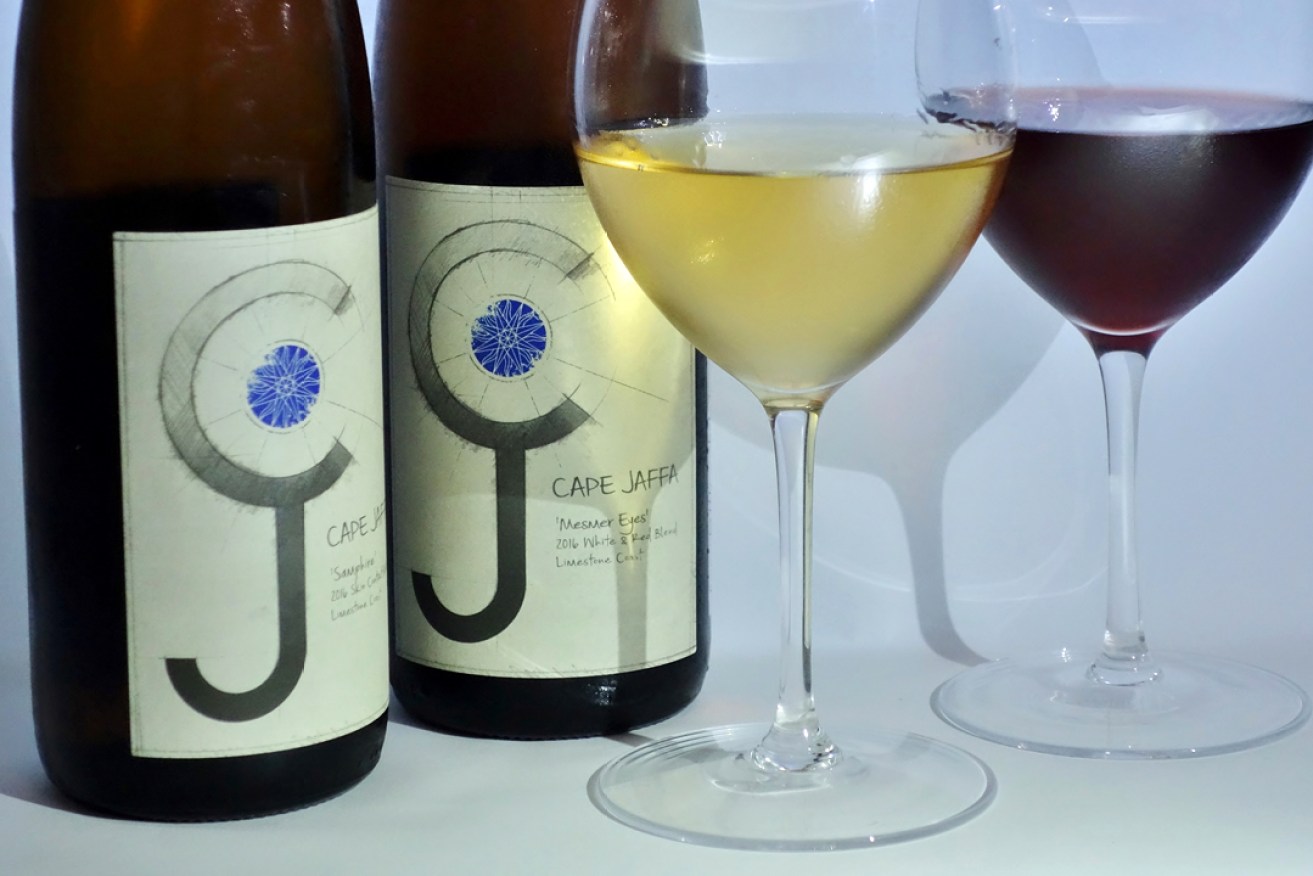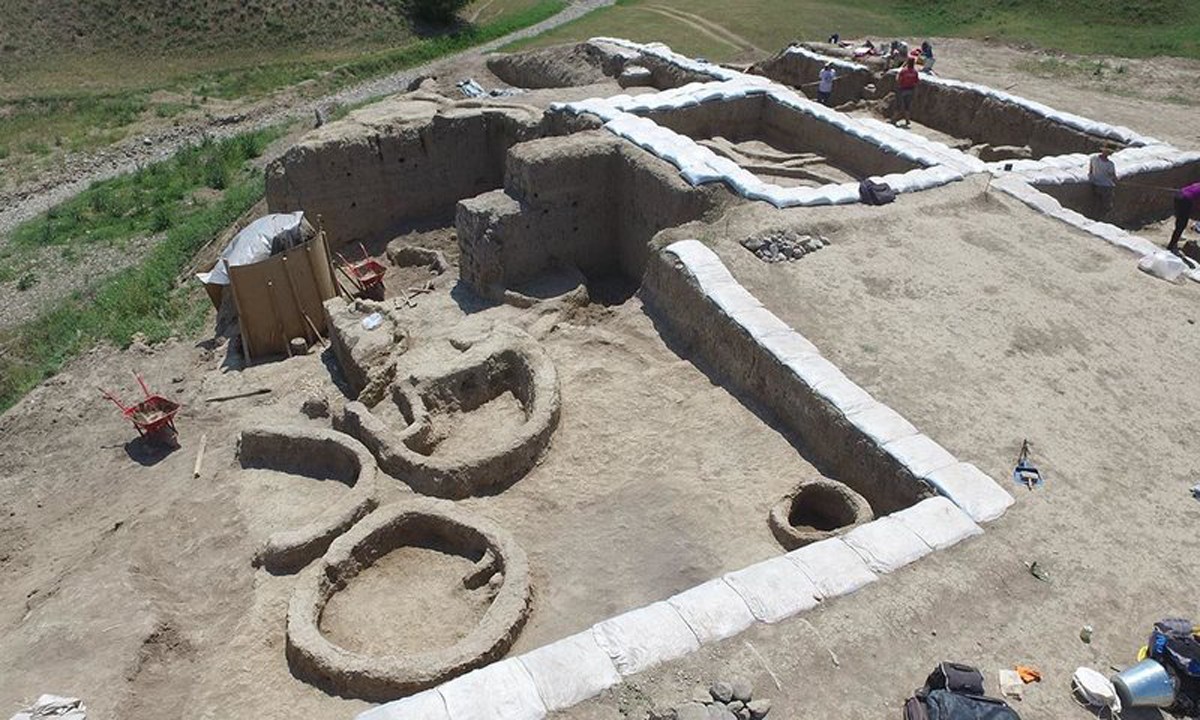Wine reviews: Crackers from Cape Jaffa
Whitey loves the adventure, daring and finesse of two new wines from the edge of the Limestone Coast.


Photo: Philip White
Cape Jaffa winemaker Des Hooper went to Georgia in the Caucasus for vintage 2015.
We’d known for a long time that modern winemaking probably started there between the Black and Caspian Seas, where Europe meets Asia.
Last week a group of scientists from the University of Toronto and the Georgian National Museum, funded largely by the National Wine Agency of Georgia, reported in the Proceeding of the National Academy of Sciences (USA) that they’d pushed back the earliest proven date of grape winemaking by about a thousand years into the Neolithic, 8000 years ago.
We know the Chinese were using grapes to make alcohol a thousand years earlier at Jiahu in the Yellow Valley, but that beverage also included fermented Hawthorn berries, mead and rice wine. Chemical residues from the Georgian pots show their wine was all grapes, pure and simple.

Excavation at Gadachrill Gora in Georgia. Photo: Judyta Olszewski
Des and Anna Hooper were pioneering biodynamicists on the Limestone Coast: he uses the modern ceramic egg-shaped version of the ancient Georgian vessels, but experiments with fermenters and containers of many different shapes. Their newest Cape Jaffa range, called Winemaking on the Edge, includes the following two radical trials, made with those 8000 years of practice foremost in mind.
Capa Jaffa CJ Samphire Limestone Coast Skin Contact White 2016 ($29; 14.5% alcohol; screw cap) was made using ideas Des brought home from the Caucasus. It’s a “mix of varieties we might not necessarily expect to see together” but is mainly Chardonnay. You can’t tell. The blend was fermented on skins and left on them for another six months in barrel.
Right from the start, the wine smells big and rich, perhaps along the lines of an unusually ripe Alsace white. It has, in lovely alluring harmony, syrupy hints of melting butter with shallots and rind, lime-and-ginger marmalade, rose petals and white pepper. While these are all pale items, this bouquet is as hearty and complex as many reds.
Given all that, the temptation is to serve the wine at a red temperature. This works well, but I prefer it after about twenty minutes in the ice bucket.
Its texture is as syrupy as that bouquet indicates, with flavours that turn on all my autumn leaf colours, from golden to russet. It has an earthy vegetal hint, like parsnip tails caramelised in a roast, and tapers off into very fine chalky tannins with a flavour that reminds me of that sprinkle of white pepper I sniffed at the start.
Given all that, I can’t help thinking of spaghetti vongole with plenty of Italian parsley and garlic, or oilier, weed-feeding fish. Coorong mullet, flathead or leatherjackets would all work grilled or slightly smoked; a yellow curry of European carp with saffron rice would also work wondrously.
This is delicious, fascinating wine.
Cape Jaffa CJ Mesmer Eyes Limestone Coast White and Red Blend 2016 ($29; 15% alcohol; screw cap) takes its name from the German quack philosopher, Franz Mesmer, whose invention of the term “animal magnetism” covered his teaching that there’s a natural energy transfer between all animate and inanimate objects. In keeping with that transfixation, the wine is a blend of batches of Gewürztraminer, each fermented on Shiraz skins.
It’s paler than full-bore dry red, and darker than any rosé, a little like the Cab Mac lighter reds Stephen Hickinbotham conjured in the ’80s. It smells red, like raspberry, cranberry and salmonberry. But even if chilled it includes, in its tantalising bouquet, white aromas like celery, citrus pith and fresh-sliced white beets. It also has a distinctive character Hick typically, lovingly, called “cold stew”. This includes white pepper and bay leaf.
Like the distinctive Cab Macs, it tastes somewhere between complex rosé and really savoury light red. It’s vibrant and engaging and seems brightly pickled, like the best Barossa dill. Its tannin is barely there, but there’s just enough to add to its piquant sharps.
The thought of a red that does well with salad is a strange notion, but this radical beauty has the perfect structure to suit a bowl of alfalfa and mung sprouts tossed in a light dressing with smoked salmon or raw – or canned – tuna, sliced dill, capers and peppery cress and/or rocket.
If you’re thinking weight and texture, this is the lighter, brighter wine of the pair.
While obviously pushing today’s droll boundaries, and as far removed from Jacob’s Creek as Alpha Centauri, these are not unfinished or unmade hippy wines. They are both quite stable, entertaining, happy drinks, clean and tidy.
They both involve a great deal more planning and design than almost everything from the murky naturalists. These two wines are complete. Accomplished. They have finesse.
Which leads me to the labels. The Spanish call labels etiquettes, after the little instructional cards newcomers were handed at court in order to know how to behave in the presence of royalty. The etiquette of wine labelling serves surely to instruct us as to what to expect in a bottle. Very handy basic information like what it is, what’s in it, where it comes from and how alcoholic it might be. I’m not yet blind, but few adults with the readies to throw at unusual wines like these could ever manage to read these back label texts without bright light and major magnification. Which you won’t find in a restaurant.
So: forgiven – just – for the fashionably unfinished livery, but praised to kingdom-come for daring, vision and finesse in the wine kitchen, here are two new age crackers with very, very old roots that I recommend from the bottom of my thirsty, greedy heart.
Which leaves me keen to see what modern Chinese winemakers will do when they forget Bordeaux and Burgundy for a century or ten and start polishing their own ancient recipes. Just take it easy on the tiger dick.
drinkster.blogspot.com




